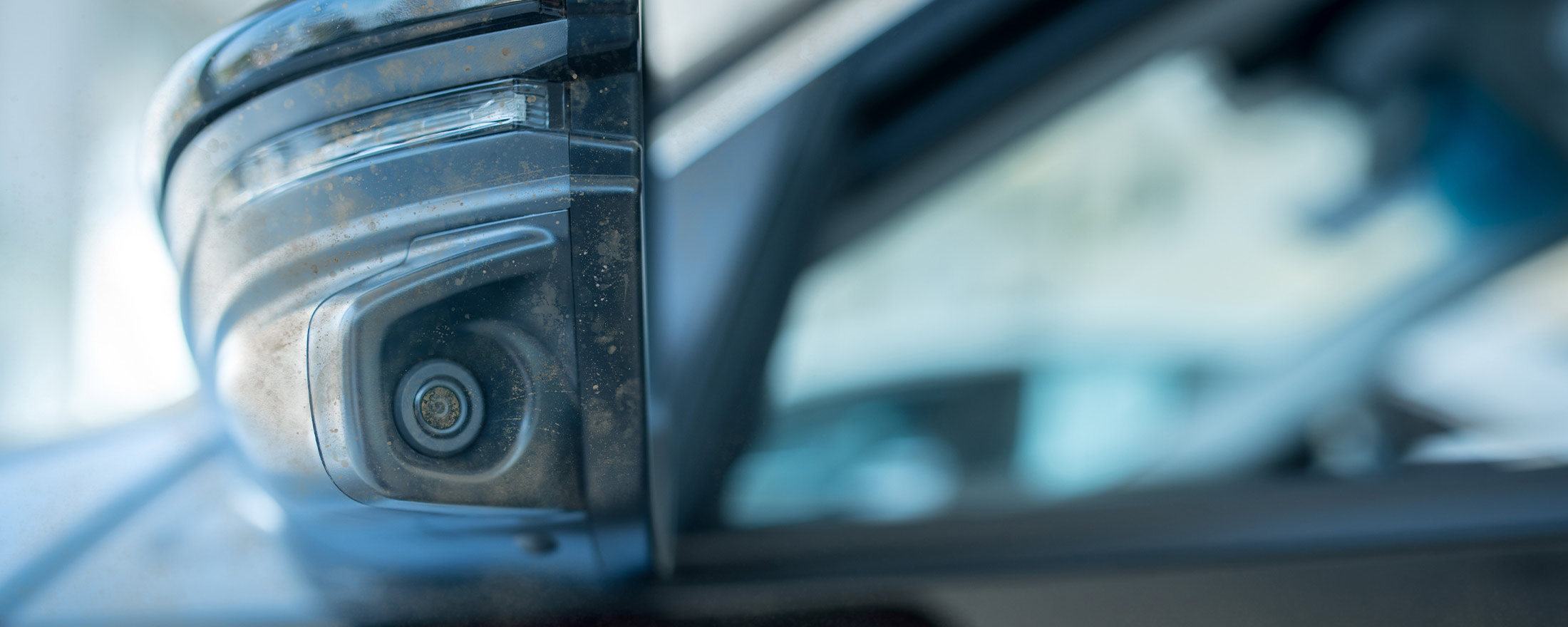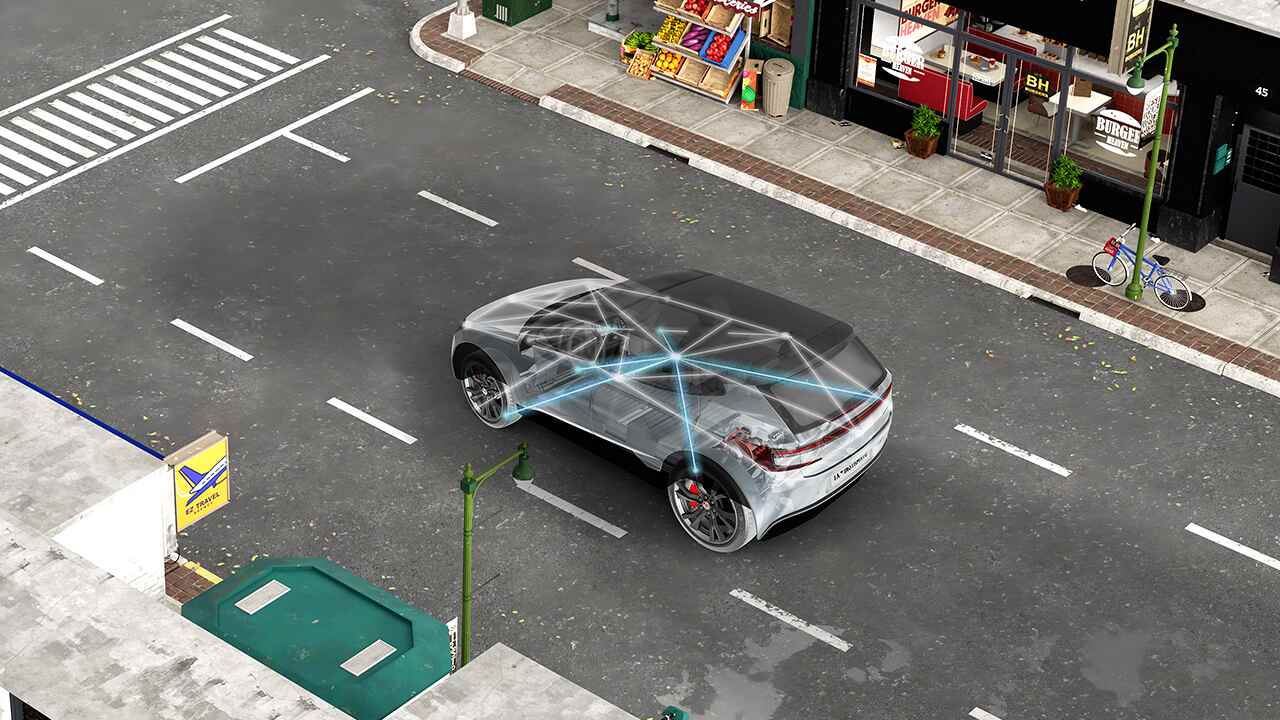As advancements in autonomy multiply the number of cameras and sensors on vehicles, drones, robots and more, a purely electrically driven method can help keep them all clean

If you’ve ever watched a dog shake off water, then you’ve witnessed “four-legged physics” – the inspiration behind the world’s first purpose-built ultrasonic lens cleaning chipset.
In the same way a dog instinctively shakes itself clean, ultrasonic lens cleaning technology uses precisely controlled vibrations to self-clean camera lenses when they become dirty or wet. As our world becomes more automated, more cameras and sensors are added to cars, robots, factories and more. Since contaminants and moisture can obstruct camera vision and impair real-time decision-making, cleaning capabilities become increasingly critical.
“Around the summer of 2015, autonomous driving started to take off and there were predictions that we’d soon have 10-15 cameras on the average car,” said Dave Magee, an engineer in Kilby Labs, our company’s applied research lab. “That raises a very practical question: How do you keep them all clean?”
Traditional cleaning solutions, such as water or compressed air sprayers, become increasingly complicated to install and maintain when you need to route water and air lines to lenses all around the car. Dave began investigating whether ultrasonic vibrations might provide a purely electrical means to keep camera lenses clean.
“By using an electro-mechanical component called a piezoelectric transducer, we can create small vibrations invisible to the human eye,” said Avi Yashar, a product marketing engineer in our Audio business who works on the ultrasonic lens cleaning project. “A lens has a natural frequency at which it vibrates, and by applying ultrasonic vibrations specifically at that frequency, the glass will shake vigorously on a microscopic level, expelling visible contaminants such as water or dirt resting on the surface.”
Shaking it off
Developing an ultrasonic lens cleaning technology that could take advantage of this phenomenon required overcoming what Dave describes as some “really complex physics problems” to coordinate the lens vibration with the transducer vibration. But through his research and testing in Kilby Labs, he not only discovered a way to safely and reliably control these vibrations without breaking the glass – he also started collaborating with engineers from our Audio business to integrate the control and monitoring systems into the world’s first purpose-built ultrasonic lens cleaning chipset.
“In terms of the algorithms and how we drive the ultrasonic system electrically, it’s very unique,” said Kelly Griffin, a systems engineer in our Audio business. “Other solutions would require multiple chips plus a separate microcontroller. Instead, we’ve taken what would have been a five-chip solution and reduced it to a two-chip solution – offering designers a compact and affordable way to integrate ultrasonic lens cleaning into their systems.”
By integrating multiple systems, our company’s ultrasonic lens cleaning chipset automatically detects when there is an obstruction on the lens and activates a cleaning cycle to remove the contaminants – reducing the need for human intervention and maintenance. The chipset can be calibrated for various types of lenses and is capable of monitoring the cleaning system to detect malfunctions. Beyond shaking off water and dust, it can even melt ice by generating heat through the rapid vibration.
All these capabilities are managed through a single pair of wires, while the chipset fits into the allocated camera space and piggybacks on the power and data lines already in place for the camera.
The self-cleaning camera
The ultrasonic lens cleaning chipset really drives efficiency in applications where stopping operations to manually clean a lens isn’t an option.
In addition to autonomous driving systems, applications might include automated production lines, medical imaging devices or delivery drones – anything with a camera lens or sensor.
“Instead of shutting down machines in a factory every time you need to clean the lens, you could have a system where these lenses periodically clean themselves without needing to halt the production line,” Kelly said. “Or you could clean the lens of a delivery drone while in flight. This feature is going to have significant advantages by allowing these applications to operate in wet weather.”
The next step for the team will be extending this technology to clean larger pieces of glass, such as those used in LIDAR systems, which can be several inches across.
When it comes to predicting future applications for ultrasonic lens cleaning, the team is most excited about seeing all the new ideas that our customers develop.
"Ultrasonic lens cleaning could be used across all industries," Avi said. "In 20 years, if you tell somebody that you used to get out of your car to clean your rear-view camera, they’ll just laugh because a camera should be able to clean itself. That just makes sense."

